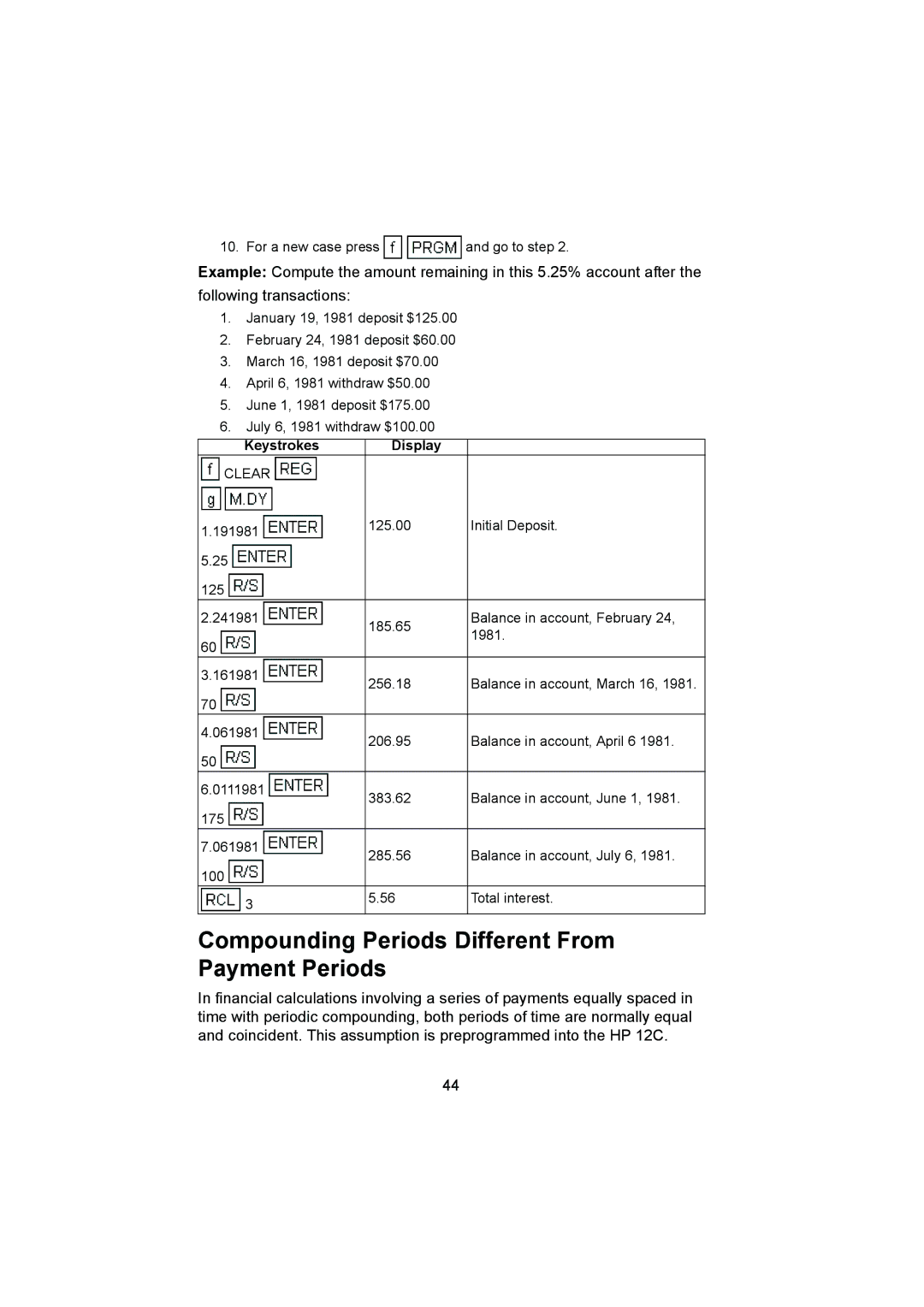
10. For a new case press ![]()
![]() and go to step 2.
and go to step 2.
Example: Compute the amount remaining in this 5.25% account after the following transactions:
1.January 19, 1981 deposit $125.00
2.February 24, 1981 deposit $60.00
3.March 16, 1981 deposit $70.00
4.April 6, 1981 withdraw $50.00
5.June 1, 1981 deposit $175.00
6.July 6, 1981 withdraw $100.00
Keystrokes Display
 CLEAR
CLEAR 
1.191981 | 125.00 | Initial Deposit. |
|
| |
5.25 |
|
|
125 |
|
|
2.241981 | 185.65 | Balance in account, February 24, |
| 1981. | |
60 |
| |
|
| |
3.161981 | 256.18 | Balance in account, March 16, 1981. |
| ||
70 |
|
|
4.061981 | 206.95 | Balance in account, April 6 1981. |
| ||
50 |
|
|
6.0111981 | 383.62 | Balance in account, June 1, 1981. |
| ||
175 |
|
|
7.061981 | 285.56 | Balance in account, July 6, 1981. |
| ||
100 |
|
|
3 | 5.56 | Total interest. |
|
|
Compounding Periods Different From Payment Periods
In financial calculations involving a series of payments equally spaced in time with periodic compounding, both periods of time are normally equal and coincident. This assumption is preprogrammed into the HP 12C.
44
